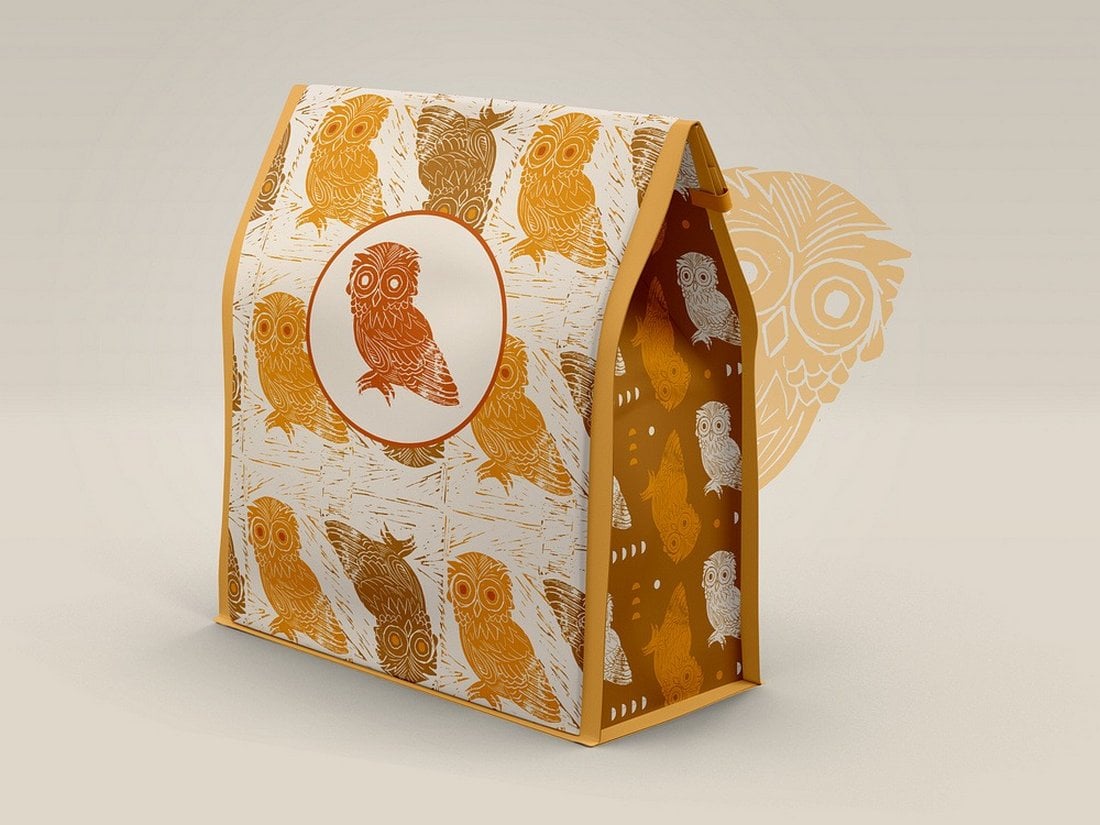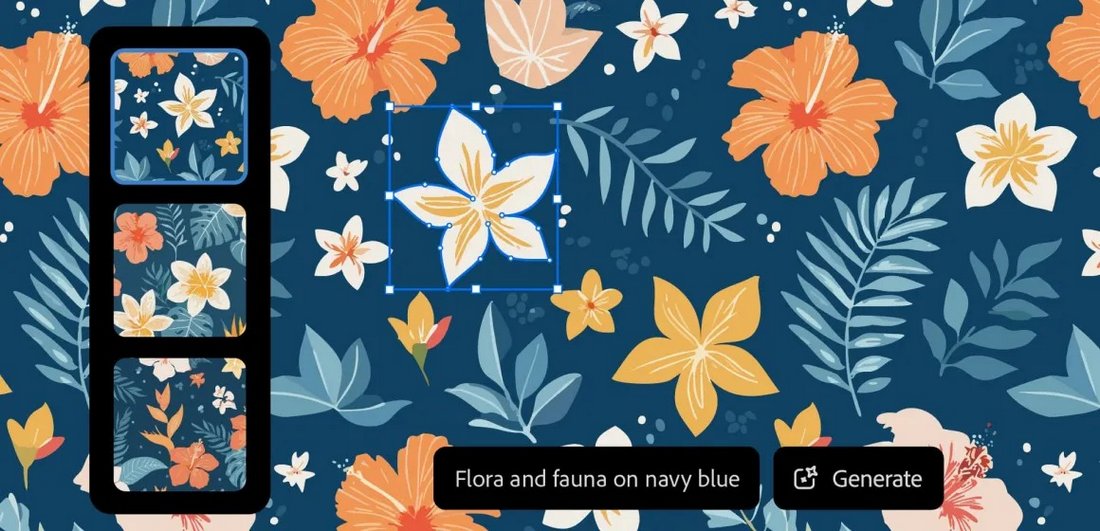5 Tips for Working With Seamless Patterns (+ Where to Find Them)
Whether you’re designing fabrics, wallpapers, or packaging designs, seamless patterns will always play a role in making your designs stand out.
Creating seamless patterns, however, can be challenging. You need to arrange all the elements correctly, align them perfectly, and find the right balance to create a repeatable pattern. And it’s no easy task.
Today, we will help you get started with a few useful tips on how to work with seamless patterns as well as mistakes to avoid. Also, don’t forget to check out the list of websites for finding seamless patterns to download.
What is a Seamless Pattern?

(Credit: Jen Borror)
A seamless pattern is a graphic or an image that can be repeated side-by-side while creating a visual that seems like a single image. You can scale them to fit any design without losing that seamless look.
The best example of a seamless pattern is the wallpapers that you use to decorate the walls or the floor tiles inside a house. They help create that repeated look all across to achieve a seamless design.
Seamless patterns are used in many different types of designs in both print and digital industries. If you look around your surroundings, you will likely find at least one or two seamless patterns, whether it’s on the floor, ceiling, the dress you’re wearing, or even the back cover case on your phone.
Needless to say, learning to work with seamless patterns is crucial for all types of designers.
1. Tile Alignment is Key
Every seamless pattern comes as a tile and it’s this tile that makes it possible for the pattern to be repeated over and over again to create that seamless look.

The alignment of the tile is the key to making it repeatable. As you can see in this example, if the edges don’t align properly, the pattern will not look seamless.

When you get the alignment right, you can scale down the pattern as far as you want, without breaking the seamless look.
2. Use Editable Patterns
There are a few different ways you can create seamless patterns. You can use real photographs of objects and scenes to create patterns. And you can also create patterns using software like Adobe Illustrator and Affinity Designer.

(Credit: Nugraha Jati Utama)
The patterns you create using images will have some limitations. Depending on the resolution of the image, the pattern won’t look great at large scale. You also won’t be able to edit the pattern.
When you use vector-based seamless patterns, you will be able to customize the design of the pattern, rearrange the objects, and create a custom look each time.
While both these types of seamless patterns are perfectly fine to use, you should try to use vector-based patterns whenever possible.
3. Choose the Right Color Palette
One of the many benefits of using seamless vector patterns is that you can customize them to change colors. This is important when you’re using patterns in branding and marketing-related designs.

(Credit: Jennifer Healy)
Using the right color palette is also important for creating the best seamless patterns. It’s with the right color balance you can create good contrast to make the pattern blend well into the background to accentuate the content you place on top of it.
4. Make Dynamic Patterns

(Credit: tubik.arts)
The arrangement of the objects and elements inside a pattern also plays a big role in the overall look of a seamless pattern design. For example, a seamless pattern with varying objects will often look more dynamic than a pattern that uses basic geometric shapes.
The rotation and the size of these icons, shapes, and objects contribute to creating the dynamic look of the pattern. And they will make your designs look more appealing despite how you scale the pattern.
In short, remember scale, rotation, and size to make your patterns look more dynamic.
5. Utilize AI to Create Patterns

The advancements in AI have made the process of creating seamless patterns much more effortless. Now, all it takes to create a seamless pattern is typing a few words into a prompt box. In fact, you can now generate editable seamless patterns right from inside the Adobe Illustrator software.
Despite being generated by AI, these patterns are highly versatile and allow you to create very specific patterns that you otherwise can’t find anywhere else.
Mistakes to Avoid When Using Seamless Patterns
Here are a few mistakes you should avoid to ensure proper use of seamless patterns.
Consider Scalability
Think about how scalable your designs going to be before you choose the patterns for your project. Using a low-resolution JPG seamless pattern on a design that goes up on a billboard will not look great.
Scalability is important when designing brand materials. Especially when you’re creating things like packaging designs, you need to remember that brands will use the same design across all their marketing campaigns. So, think about the resolution and scalability of your seamless patterns before using them.
Using Overly Complex Patterns
A clean and simple pattern is the best choice for creating seamless backgrounds, whether it’s for a shirt or a phone back cover.
When you stuff a pattern tile with too many objects, shapes, and colors, it will negatively affect the overall look of your design. It will also make it difficult to create a contrast between the background and the content on top of it.
Not Testing the Pattern
On rare occasions, some seamless patterns will break the repeating process, leaving a weird and unprofessional look. This usually happens when you rotate the pattern or align it differently than intended.
To avoid such issues, you should always test and experiment with different seamless patterns. Make sure to scale it to different sizes and try various alignments before finalizing the design and handing it over to the client.
Where to Download Seamless Patterns
You don’t always have to create seamless patterns from scratch. You can easily find many amazing-looking patterns from design marketplaces. Here are a few sites worth checking out.
Envato Elements

With more than 10,000 pattern packs to choose from, Envato Elements offers a wide range of selections for you to choose the right seamless pattern for your designs, including vector-based patterns.
What makes Envato Elements more appealing is its subscription model. For just $16.50 per month, you can download all of the pattern files and all the other design resources on the platform for just a single price.
Creative Market

Creative Market also has a massive collection of seamless patterns and packages in various categories and styles. This platform is much more suitable for downloading individual pattern files. There are pattern packs with prices starting at just $10 and sometimes even lower.
Freepik

You can find tons of great free pattern files on the Freepik website. It includes patterns in both JPG and vector EPS formats. And you can use them for free by attributing to the website. There are also premium patterns that you can access by subscribing to the platform.
Vecteezy

Vecteezy is one of the go-to platforms for finding free vector graphics. It has a large collection of seamless vector patterns that are free to use with commercial projects but with some limitations. You can join a premium plan to extend those limits.
Rawpixel
Rawpixel has a very unique collection of seamless patterns that you can explore under three different categories. There are patterns made with photos, illustrations, and PNG elements. Both free and premium patterns are included.
Conclusion
Even though using seamless patterns seems like such a simple process, there are many important things to keep in mind to ensure they look and work properly. Using the right software, resolution of the pattern files, scalability, color schemes, and customizability, just to name a few.
Whether you’re using pre-made pattern files or creating unique patterns yourself, you are now fully equipped to create effective seamless designs in the future.